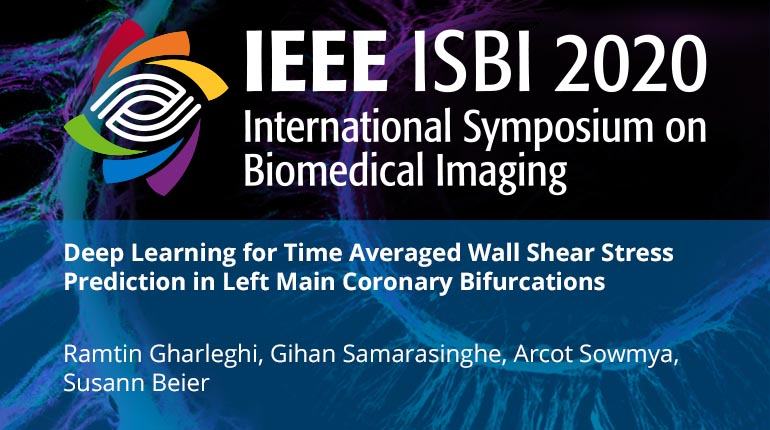
Already purchased this program?
Login to View
This video program is a part of the Premium package:
Deep Learning for Time Averaged Wall Shear Stress Prediction in Left Main Coronary Bifurcations
- IEEE MemberUS $11.00
- Society MemberUS $0.00
- IEEE Student MemberUS $11.00
- Non-IEEE MemberUS $15.00
Deep Learning for Time Averaged Wall Shear Stress Prediction in Left Main Coronary Bifurcations
Analysing blood flow in coronary arteries has often been suggested in aiding the prediction of cardiovascular disease (CVD) risk. Blood flow induced hemodynamic indices can function as predictive measures in this pursuit and a fast method to calculate these may allow patient specific treatment considerations for improved clinical outcomes in the future. In vivo measurements of these metrics are not practical and thus computational fluid dynamic simulations (CFD) are widely used to investigate blood flow conditions, but require costly computation time for large scale studies such as patient specific considerations in patients screened for CVD. This paper proposes a deep learning approach to estimating the well established hemodynamic risk indicator time average wall shear stress (TAWSS) based on the vessel geometry. The model predicts TAWSS with good accuracy, achieving cross validation results of average Mean Absolute error of 0.0407Pa and standard deviation of 0.002Pa on a 127 patient CT angiography dataset, while being several orders of magnitude faster than computational simulations, using the vessel radii, angles between bifurcation (branching) vessels, curvature and other geometrical features. This bypasses costly computational simulations and allows large scale population studies as required for meaningful CVD risk prediction.
Analysing blood flow in coronary arteries has often been suggested in aiding the prediction of cardiovascular disease (CVD) risk. Blood flow induced hemodynamic indices can function as predictive measures in this pursuit and a fast method to calculate these may allow patient specific treatment considerations for improved clinical outcomes in the future. In vivo measurements of these metrics are not practical and thus computational fluid dynamic simulations (CFD) are widely used to investigate blood flow conditions, but require costly computation time for large scale studies such as patient specific considerations in patients screened for CVD. This paper proposes a deep learning approach to estimating the well established hemodynamic risk indicator time average wall shear stress (TAWSS) based on the vessel geometry. The model predicts TAWSS with good accuracy, achieving cross validation results of average Mean Absolute error of 0.0407Pa and standard deviation of 0.002Pa on a 127 patient CT angiography dataset, while being several orders of magnitude faster than computational simulations, using the vessel radii, angles between bifurcation (branching) vessels, curvature and other geometrical features. This bypasses costly computational simulations and allows large scale population studies as required for meaningful CVD risk prediction.
 Cart
Cart Create Account
Create Account Sign In
Sign In





